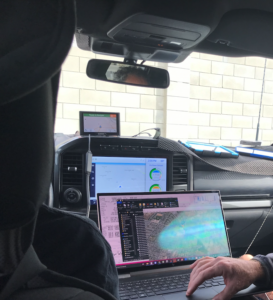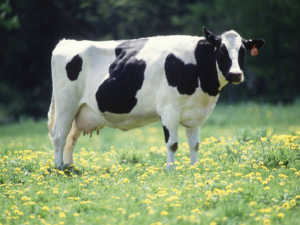
Abandoned oil wells pose a long-term threat to climate and human health (when located in urban settings), yet emissions from abandoned and idled wells are largely unknown. This problem is exacerbated in earthquake prone areas such as southern California, where seismic stresses and motions can reopen sealed wells.
To better understand the threat, BRI is undertaking an emissions assessment study of abandoned and idled wells using its state-of-the-art mobile air quality laboratory, SISTER2TM, installed on a truck platform, TMOG Surveyor 2. A recent, early February 2022 survey investigated emissions from abandoned, idled, and active oil wells near Maricopa, CA, in the southern Central California Valley.

Millions of oil wells across the US are abandoned or will be abandoned in the upcoming decades, particularly as global energy sources switch from fossil hydrocarbons to renewables. Abandoned oil wells are difficult to identify and the gasses they can emit are colorless and often odorless. Additionally, many abandoned oil wells are buried and hidden. Moreover, seismic motions and stresses may reopen even sealed wells leading to hydrocarbon gas emissions. Moreover, these emissions are likely to continue in perpetuity (geological time scales), i.e., the lifecycle “cost” in terms of emissions can be enormously greater than annual rates, rates that are largely unknown. Finally, it is important to note that such emissions can have human health implications.
The main component of these gaseous emissions are the powerful greenhouse gas, methane, which also is the main component of natural gas, although sometimes the greenhouse gas, carbon dioxide, is dominant. Other hydrocarbon gasses, most strongly ethane, also are emitted, with the methane to ethane ratio one method to identify plumes that likely arise from biological sources. Other approaches are methane isotopes, or looking for carbon monoxide to identify a combustion rather than leak as the plume source, or looking at ammonia or nitrous oxide to identify dairy and other biological sources of the methane plume. Finally, geolocation of the source based on accurate wind measurements may also help identify the source.

Fossil fuel production in Bakersfield, CA.

SISTER2 in TMOG2, BRI’s upgraded mobile air quality laboratory. Photo early 2022 in Poso Creek oil field.
Hydrocarbon leak emissions from abandoned (orphaned and not orphaned) and idled oil wells arise from cracks in flanges and other pipeline components and well components and/or from the ground. These leaks can be mapped during downwind surveys that transect the plume(s) of escaping gasses that drift downwind. Additionally, for active wells, a range of components may release emissions, including as part of normal function. This survey mapped the plume onto unique winds that shifted N to south which presented a new atmospheric look on emissions at the field.

Real-time visualization of data in SISTER2 cabin.
Bubbleology Research International (BRI) recently conducted a survey of the Kern Oil Fields using SISTER 2 – (Standard Instrumentation Suite: Truck Enabled for Response). SISTER 2 is a comprehensive air quality laboratory in the bed of a truck. SISTER2 measures 14 trace gasses at up to highway speed, mostly at sub ppb accuracy. Downwind surveys performed by SISTER2 detected oil well emissions in a range of trace gasses including by their reaction with and suppression of ozone from active wells, with all instruments nominal including both anemometers. Currently, SISTER2 features dual anemometers, due to concern on the performance of one anemometer – thus a separate mission objective was anemometer intercomparison.
Methane, the main component of natural gas, and ethane (as well as other hydrocarbon gasses) are detected by extremely sensitive gas analyzers and visualized in near real-time. Real-time visualization allows the survey to drive slower in areas of greater interest and to repeat key areas.
High quality emission surveys of oil fields (like those performed by SISTER2) help scientists understand the underlying factors, providing invaluable information that can improve maintenance cycles and increase production through better understanding of reservoir dynamics, and by reducing emissions (selling the lost gas), and reducing pollution. Some of the hydrocarbons that leak along with methane can be of health concern (in high concentrations) to workers and downwind communities. For example, benzene is a petroleum hydrocarbon that is in crude oil, natural gas, and gasoline and is a carcinogen implicated in leukemia and other health impacts.



